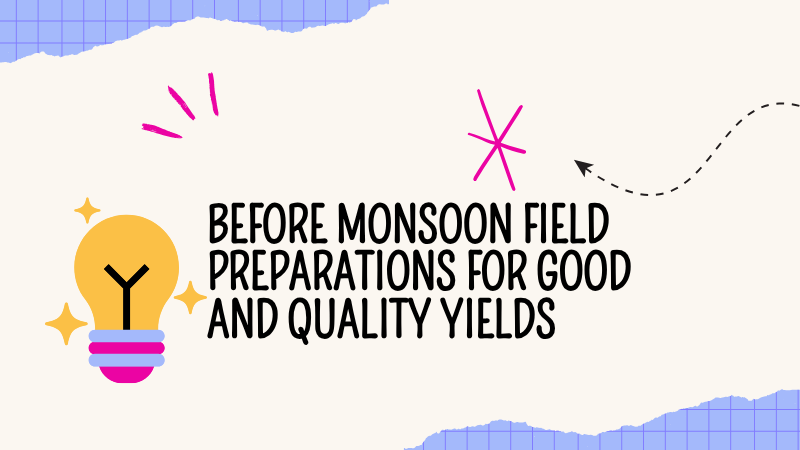

Pre-Monsoon Field Preparation for Quality Yields
1. Soil Testing
Why: To understand soil pH, nutrient levels, and salinity.
Action: Conduct a soil test through a local agri lab or KVK.
Result: Helps in deciding the right type and amount of fertilizers.
2. Field Cleaning
Action: Remove weeds, previous crop residues, and stones.
Reason: Reduces pest and disease risk; prepares the land for smooth operations.
3. Deep Ploughing
Tool: Tractor with plough or power tiller.
Benefit: Breaks hardpan, improves aeration, and helps in water absorption.
Tip: Do it when the soil is dry for better results.
4. Application of Organic Manure
Material: FYM (Farm Yard Manure), compost, green manure.
Why: Improves soil structure, microbial activity, and nutrient availability.
Timing: At least 2-3 weeks before sowing.
5. Drainage Planning
Why: To avoid waterlogging during heavy rains.
Action: Make small drainage channels or raised beds for water to pass through.
6. Bunding and Levelling
Tools: Laser land leveler (if available), manual tools.
Benefits: Prevents soil erosion and ensures uniform water distribution.
7. Incorporating Crop Residue or Green Manure
Examples: Sunhemp, dhaincha, moong.
Purpose: Adds organic matter, nitrogen fixation, and improves soil fertility.
8. Preventive Pest and Weed Control
Action: Spray pre-emergent herbicides or natural solutions if weeds are present.
Pro Tip: Burning crop residue is harmful—opt for shredders or incorporation.
9. Selection of Seeds and Inputs
Do: Choose certified seeds with good disease resistance and high yield potential.
Also: Arrange fertilizers, biostimulants, and microbial inputs in advance.
10. Preparing Equipment
Ensure: All machines like seed drills, tillers, and sprayers are serviced and ready.
Bonus Tip 🌱
If you’re into sustainable or organic farming, adding biofertilizers like Azotobacter or PSB (Phosphate Solubilizing Bacteria) during soil prep can greatly enhance soil fertility.
